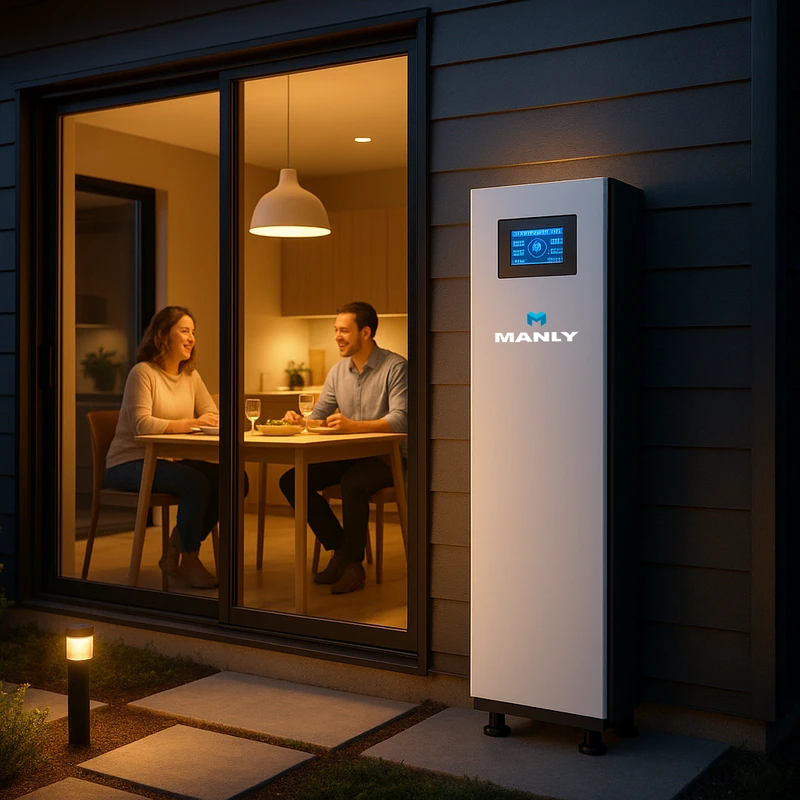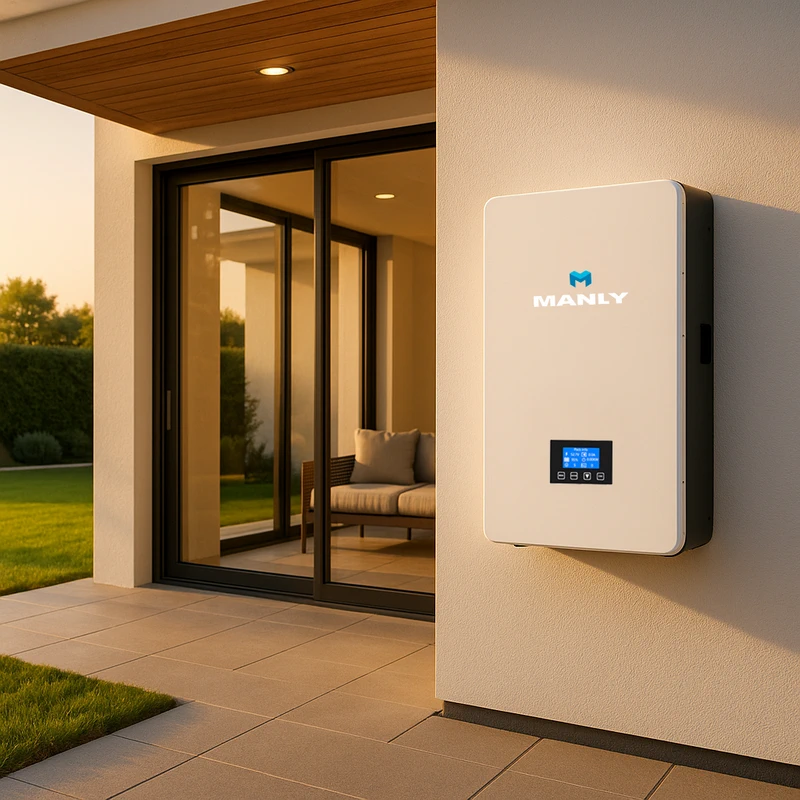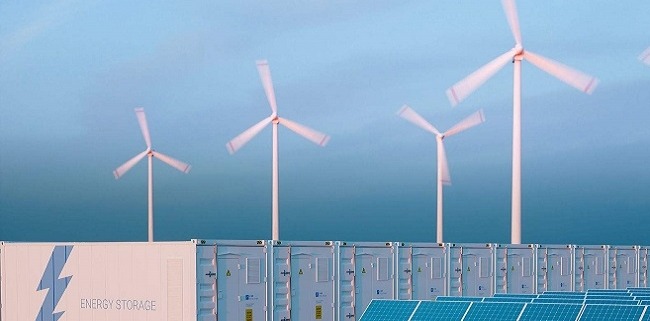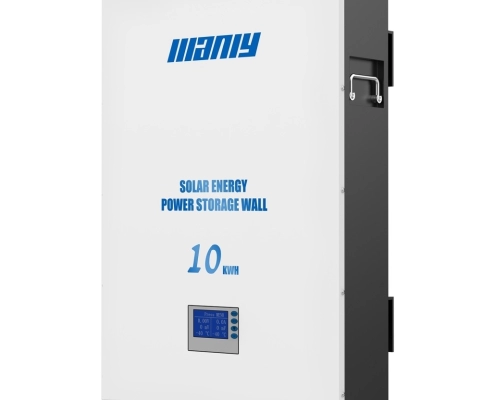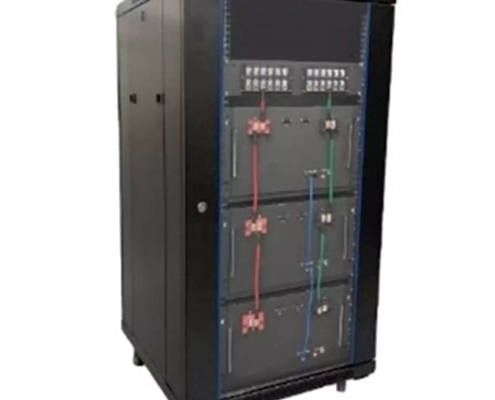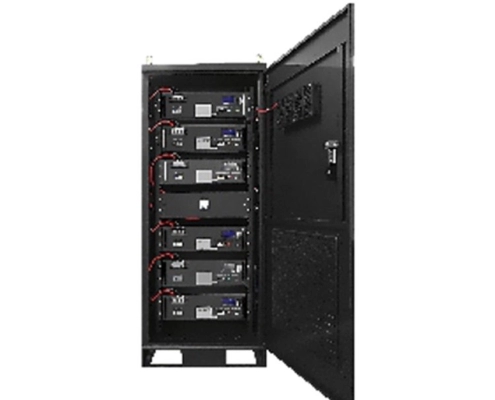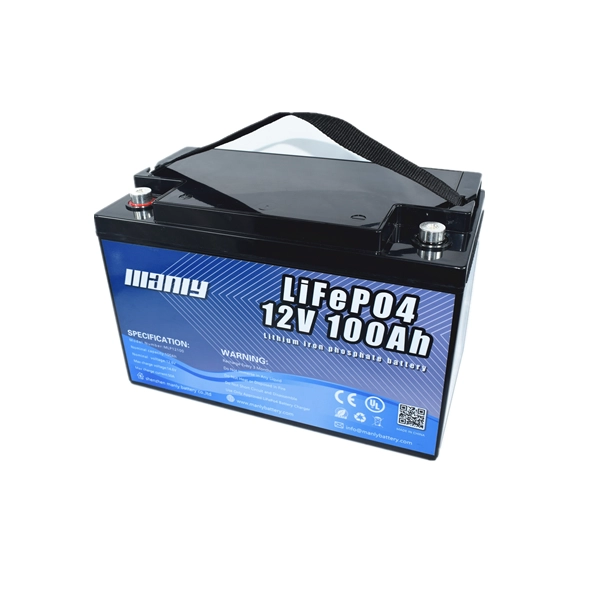The Complete Guide to Solar Battery Storage in South Africa: Types, Benefits, and Smart Buying Tips for 2025
Table of Contents
- The Complete Guide to Solar Battery Storage in South Africa: Types, Benefits, and Smart Buying Tips for 2025
- What Is Solar Battery Storage?
- Which Battery Is Best for Solar System?
- AC Coupled Storage vs. DC Coupled Storage
- How Does Solar Battery Storage Work
- How Many Solar Batteries Are Needed to Power a House?
- Benefits of Solar Battery Storage
- How to buy solar battery online in South Africa Safely and Smartly
- Top solar battery storage manufacturers and Why You Should import solar cell batteries from China
- Conclusion
- FAQ
- Learn More About Battery
- SMC Global Power plans to deploy 1GW battery energy storage project in 2022
- Outstanding Solar Batteries Guide for Smart Homes of 2024
- Are Solar Batteries Worth It?
- How Long Do Solar Batteries Last?
- Solar Batteries: How Well Do They Work?
- Selecting the Right Solar Battery
- How Do you Test a Solar Battery Bank?
- How Much Do Solar Batteries Cost
- Best Solar Batteries
- Definition and Types of Agricultural Robots
- 1. Definition of agricultural robot:
- 2.How Are Robots Used in Agriculture
- 3. Types of Agricultural Robots:
- 4. Lithium Batteries for agricultural robots
- 5. Conclusion
South Africa’s growing energy crisis has made reliable power solutions more important than ever. For homeowners and businesses looking to reduce dependence on Eskom and survive daily load shedding, Solar Battery Storage offers a practical and long-term solution. This guide walks you through everything you need to know—from battery types and system setups to how to buy solar battery online or import solar cell batteries from China safely. Whether you’re installing a new system or upgrading an old one, this article is designed to help you make smart, cost-effective decisions tailored to South African conditions.
What Is Solar Battery Storage?
Solar Battery Storage is a system designed to hold the excess electricity generated by solar panels during the day. Instead of feeding unused solar energy back into the grid, this energy is stored in a battery and can be used later—especially at night or during blackouts. For South African homes and businesses facing regular load shedding, this system plays a critical role in ensuring a steady and reliable power supply.
1. Key Components of a Solar Battery Storage System
A Solar Battery Storage setup combines several core components, each serving a unique function to capture, store, and convert solar energy for everyday use.
Solar Panels
Solar panels convert sunlight into direct current (DC) electricity. They form the front-end of the system, supplying power during sunny hours. South Africa’s average solar irradiance—estimated at over 220 W/m²—makes solar panels highly effective in local conditions.
Charge Controller
This device manages the flow of electricity from the panels to the battery. It protects the battery from overcharging and extends its lifespan. A quality charge controller ensures efficient charging, even under fluctuating sunlight conditions—common in many regions of South Africa.
Battery Bank
This is the heart of the system. The solar battery stores energy for later use. Two main types dominate the market:
- Lithium-ion batteries, such as Chinese 10 kWh LiFePO4 solar battery packs, are compact, long-lasting (typically 8 to 15 years), and more efficient (up to 95%). Although pricier, they offer better performance and are ideal for residential and commercial users looking for durability and low maintenance.
- Lead-acid batteries are cheaper but bulkier, with shorter lifespans (3 to 5 years) and lower depth-of-discharge capabilities. They may still suit low-budget or backup-only installations.
Inverter
Most home appliances use alternating current (AC), but solar panels and batteries operate in DC. The inverter bridges this gap, converting stored DC into usable AC. A properly sized inverter ensures that you can run essential appliances even during peak usage or outages.
2. Importance in the South African Context
South Africa has experienced repeated energy disruptions due to scheduled power cuts, commonly known as load shedding. In response, more homeowners and businesses are turning to Solar Battery Storage systems to take control of their energy needs.
According to data from Eskom and the South African Reserve Bank, electricity reliability has a direct impact on productivity and household comfort. A robust storage system can:
- Reduce dependence on the unstable grid
- Enable businesses to stay operational, avoiding costly downtimes
- Improve return on investment for solar systems by maximizing self-consumption
Given this backdrop, many South African buyers are choosing to import solar cell batteries from China, particularly from reliable solar battery storage manufacturers offering competitive pricing and quality assurance. Products like Chinese 10 kWh LiFePO4 solar battery packs are gaining popularity due to their proven resilience, high energy density, and value-for-money—especially when purchased in bulk from a trusted battery manufacturer.
Which Battery Is Best for Solar System?
In South Africa, where load shedding is a daily challenge and summer heat can soar above 35°C, selecting the right solar battery isn’t just about efficiency—it’s about survival. For homeowners and businesses alike, the ideal battery must withstand frequent charge-discharge cycles, offer thermal stability, and provide long-term savings. That’s why LiFePO₄ (Lithium Iron Phosphate) batteries are gaining traction across the country. Known for their safety and performance in extreme climates, they stand out as the most practical option in today’s energy environment.
1. Common Solar Battery Types
Lead-Acid Batteries (Flooded & AGM)
These traditional batteries are still widely used due to their low entry cost. However, in the long run, they tend to fall short in terms of durability and maintenance.
- Pros: Affordable upfront investment
- Cons: Short cycle life (2–4 years), low depth of discharge (~50%), and high maintenance demand
- Best for: Users on a tight budget who need backup only during short outages
AGM (Absorbent Glass Mat) Batteries
AGM batteries are a sealed type of lead-acid battery and require no water refills. They’re spill-proof and easier to maintain but still suffer from limited cycle life.
- Pros: Maintenance-free, leak-resistant design
- Cons: Lower energy efficiency and typically 500–1,200 cycles
- Best for: Customers wanting a cleaner alternative to traditional lead-acid, without switching to lithium
Lithium-Ion (Li-ion) Batteries
Standard lithium-ion batteries deliver strong overall performance, balancing lifespan and efficiency. However, they may pose thermal risks if not correctly managed.
- Pros: High energy density, long service life (up to 10 years), faster charging
- Cons: Higher cost and safety risks if BMS (Battery Management System) is poor
- Best for: Users focused on energy efficiency and space-saving
LiFePO₄ (Lithium Iron Phosphate) Batteries
LiFePO₄ is considered the safest and most durable solar battery option available. It handles heat well and lasts thousands of cycles, which is why more South Africans now prefer chinese 10 kWh lifepo4 solar battery packs for long-term energy storage.
- Pros: Thermal stability, 3,000–6,000 charge cycles, high DoD (~90%)
- Cons: Higher initial cost compared to lead-acid
- Best for: Residents in high-temperature zones and those affected by regular load shedding
2. Performance Comparison
| Feature | Lead-Acid | AGM | Li-ion | LiFePO₄ |
|---|---|---|---|---|
| Cycle Life (80% DoD) | 500–1,200 | 500–1,200 | 2,000–5,000 | 3,000–6,000 |
| Depth of Discharge (DoD) | ~50% | ~50% | ~80% | ~90% |
| Maintenance | High | Low | Low | Low |
| Temp. Tolerance | Moderate | Moderate | Moderate | High |
| Upfront Cost | Low | Moderate | High | High |
| Total Lifetime Cost | High | High | Moderate | Low |
3. Suitability for South African Conditions
Heat Resistance
With average summer highs regularly reaching above 30°C in many provinces, battery performance can suffer due to overheating. LiFePO₄ batteries are built to operate efficiently in hot conditions without rapid degradation, unlike lead-acid or AGM models.
Load Shedding Durability
During Eskom’s stage 4 or stage 6 blackouts, batteries are charged and discharged more often than in most countries. Only solar battery systems with high cycle life can survive such stress without frequent replacement—making LiFePO₄ the most dependable solution.
4. Long-Term Cost Considerations
Although LiFePO₄ batteries come at a higher initial price, their extended lifespan and low maintenance make them more cost-effective over time. For example, a typical LiFePO₄ solar battery rated for 6,000 cycles may last 10–15 years under daily use. In contrast, lead-acid units might require 3 or 4 replacements in the same period.
This has driven many local installers and buyers to import solar cell batteries from China, where solar battery storage manufacturers offer bulk deals and advanced battery technologies at more competitive prices. For those looking to buy solar battery online, checking the cycle rating, depth of discharge, and warranty coverage is critical.
AC Coupled Storage vs. DC Coupled Storage
As more South African households invest in Solar Battery Storage, understanding the difference between AC and DC coupled systems has become essential. These two system architectures affect how efficiently solar energy is stored and used—especially during load shedding. Whether you’re upgrading an existing setup or planning a brand-new installation, choosing the right coupling method can impact long-term performance and cost.
1. What Is AC Coupled Storage?
In an AC coupled setup, your solar panels first produce DC electricity. This power is converted into AC through a dedicated solar inverter for home use. Any excess energy is then sent through a battery inverter, which converts the AC back into DC to charge your solar battery. While this may sound like a loop, the structure is ideal for homeowners who already have solar panels installed and want to add storage later without replacing their current inverter system.
Key Advantages:
- Retrofitting Made Easy: If you already own a solar system, AC coupling allows you to add storage without overhauling your existing infrastructure. This makes it the preferred option for South Africans looking to scale in phases.
- Greater System Flexibility: You can independently size your solar array and solar battery, making it easier to upgrade as your energy needs grow.
- Multiple Charging Sources: AC-coupled batteries can recharge from both solar panels and the Eskom grid, ensuring backup power even when solar production is low.
Drawbacks to Consider:
Energy Conversion Losses: Every switch between AC and DC reduces efficiency. Most AC-coupled systems offer about 90–94% round-trip efficiency, slightly lower than DC-coupled alternatives.
Higher Initial Equipment Costs: Because two separate inverters are involved—one for solar and one for storage—the upfront investment tends to be higher.
2. What Is DC Coupled Storage?
DC coupling offers a more streamlined approach. In this configuration, solar panels, the battery, and a hybrid inverter are directly connected. The DC electricity from the panels charges the solar battery without any conversion loss. The hybrid inverter then converts just the required portion into AC to power your home. This system is especially efficient for new solar-plus-storage installations.
Key Advantages:
- Maximum Efficiency: By reducing the number of conversions, DC coupled systems can reach up to 98% efficiency—ideal for South African households trying to get the most out of every kilowatt-hour.
- Lower Equipment Costs for New Builds: One hybrid inverter handles everything, cutting down on hardware and simplifying maintenance.
- Ideal for Self-Consumption: DC coupling allows solar energy to go directly into your battery storage, enabling higher self-use rates and reducing dependence on grid-supplied power.
Potential Limitations:
- Retrofitting Challenges: If you already have a standalone solar inverter, switching to a DC coupled system usually means replacing it with a hybrid model.
- Limited System Expansion: Once installed, the capacity for adding more panels or batteries may be restricted by the size of the hybrid inverter.
3. Practical Considerations for South Africa
In the South African context—where load shedding, rising energy tariffs, and grid instability are the norm—choosing the right system design depends on your specific situation.
For Existing Solar Systems:
If you already have a grid-tied solar setup, AC coupling is generally more cost-effective and easier to implement. It allows you to simply add Solar Battery Storage without replacing your current inverter, saving time and labor.
For New Installations:
DC coupling offers better long-term performance. For South Africans building a system from scratch, it provides higher energy efficiency, streamlined architecture, and lower operational losses.
Role of Hybrid Inverters:
Hybrid inverters, which are increasingly offered by top solar battery storage manufacturers, combine both solar and battery management in one unit. They’re becoming a standard solution in homes seeking all-in-one performance with minimal complexity.
Whether you plan to buy solar battery online or import solar cell batteries from China, make sure your installer matches the battery system type to your inverter configuration. Many customers in South Africa are already switching to chinese 10 kWh lifepo4 solar battery packs due to their high efficiency and long cycle life, especially when paired with DC-coupled hybrid setups.
How Does Solar Battery Storage Work
Understanding how Solar Battery Storage operates is key for South African homeowners facing frequent power disruptions. In simple terms, the system captures excess solar energy during the day, stores it in batteries, and supplies it when sunlight isn’t available—like during evening hours or load shedding. Here’s a step-by-step look at how the energy flows through the system and how it helps keep your home powered when the grid fails.
1. Simplified Energy Flow
Solar Panels Generate DC Power
During the day, solar panels absorb sunlight and convert it into direct current (DC) electricity. South Africa’s high solar irradiance—often exceeding 5 kWh/m²/day—makes this process highly efficient in most regions, from the Western Cape to Gauteng.
Charge Controller Regulates Power
Before the energy reaches your solar battery, it passes through a charge controller. This device ensures the voltage and current stay within safe limits, protecting the battery from overcharging. Proper regulation also extends battery lifespan—critical for systems exposed to high temperatures like those in Limpopo or the Northern Cape.
Battery Bank Stores DC Energy
Once regulated, the DC electricity is stored in a battery bank. Most South African homeowners now prefer lithium-ion or LiFePO₄ batteries due to their long lifespan, deep discharge capability, and better tolerance to heat. For instance, chinese 10 kWh lifepo4 solar battery packs are widely adopted for their balance of performance and affordability.
Inverter Converts DC to AC
Your household appliances use alternating current (AC). So when power is needed, an inverter converts the stored DC energy into AC, matching the standard voltage used in South African homes (typically 230V, 50Hz). This ensures that lights, TVs, fridges, and other essentials continue working, even when the grid goes down.
Appliances Draw Backup Power
When load shedding strikes, or at night when solar generation drops to zero, the inverter feeds stored power to selected appliances. With proper system sizing, most families can cover their lighting, security systems, and communications equipment for several hours without interruption.
2. Real-World Example: Load Shedding Backup
In metro areas like Johannesburg, Cape Town, and Durban, Stage 4 load shedding can cut power for up to four hours at a time. A 5 kWh battery system can typically run LED lights, Wi-Fi routers, and phone chargers for around 3–4 hours. For homes that want to power fridges, security gates, and TV sets as well, a 10 kWh setup offers broader coverage. Many families now buy solar battery online or work with local installers to match capacity with their actual needs.
3. Smart BMS & Mobile-App Monitoring
Modern Solar Battery Storage systems aren’t just boxes with wires—they’re intelligent platforms equipped with Battery Management Systems (BMS) and real-time control apps. These systems offer:
Live Status Updates: Monitor individual cell voltages, battery temperature, and overall state of charge in real-time.
Control Functions: Adjust charging parameters, discharge limits, or set alerts for unusual activity—remotely through a password-secured mobile app.
Performance Analytics: Review daily energy generation and consumption patterns to improve efficiency and predict storage needs more accurately.
Many of these features are standard on systems from advanced solar battery storage manufacturers, giving South African users full control over their energy supply.
4. Tailored Solutions for South African Homes
For typical South African households dealing with unpredictable power supply, a battery system between 5 kWh and 10 kWh usually meets the essential load demand. This range is ideal for backing up lighting, electronics, and refrigeration during power cuts, while also reducing long-term electricity costs.
Many users now prefer to import solar cell batteries from China for better value and advanced technology, especially from trusted battery manufacturers offering warranties and international support. When matched with the right inverter and solar panel setup, these systems provide a stable, smart, and scalable energy solution for modern South African living.
How Many Solar Batteries Are Needed to Power a House?
When it comes to sizing your Solar Battery Storage system in South Africa, it’s not a one-size-fits-all decision. Your energy needs depend on your home’s daily usage, how long you want backup power to last during load shedding, and what appliances you plan to run. With the national grid under pressure and blackouts common in both urban and rural areas, getting this calculation right is essential for energy security and cost-effectiveness.
Step 1: Review Your Daily Electricity Use
Start by checking your latest electricity bills. Look for your average daily usage in kilowatt-hours (kWh). For example, if your household uses around 12 kWh per day, your battery system should ideally be able to store slightly more than that—to account for energy conversion losses and ensure a buffer during cloudy days or extended blackouts.
In South Africa, small homes typically use 6–8 kWh/day, while medium homes fall into the 10–12 kWh range. Larger households can exceed 18 kWh, especially when electric geysers and air conditioners are in regular use.
Step 2: Calculate Backup Time Requirements
Next, consider how long you want your solar battery to supply power when the grid is down. If your critical appliances—such as lights, routers, and a fridge—use around 2 kW per hour, and you want 6 hours of backup, you’ll need at least 12 kWh of usable storage capacity.
Load shedding in areas like Pretoria and Cape Town can last 4–6 hours, so this calculation helps determine a realistic system size that keeps your essentials running through every blackout.
Step 3: Account for Depth of Discharge (DoD)
Most lithium-ion batteries, including popular LiFePO₄ types, have a usable Depth of Discharge (DoD) of 90%. That means you can use 90% of the battery’s capacity without damaging its lifespan.
So, if you need 12 kWh of usable power, divide it by 0.9 to find the total battery capacity needed:
12 kWh ÷ 0.9 = 13.3 kWh
This safety margin ensures long-term performance and protects your investment. Leading battery manufacturers often specify this value clearly, especially when you buy solar battery online or import solar cell batteries from China.
Step 4: Match Capacity to Appliance Use
Your energy storage system must match your actual appliance usage. If you plan to run high-draw items like an oven, electric heater, or aircon during outages, your battery needs will increase substantially.
On the other hand, if your goal is to cover essentials only—such as LED lighting, phone charging, Wi-Fi, and refrigeration—a smaller setup will do just fine.
Some customers opt to install chinese 10 kWh lifepo4 solar battery packs, which strike a good balance between size and affordability for most mid-sized South African homes.
Recommended Battery Configurations for South African Households
| Household Size | Daily Energy Use | Suggested Battery Capacity | Common Setup Options |
|---|---|---|---|
| Small (1–2 people) | 6–8 kWh | 7–9 kWh | 1 x 10 kWh lithium battery |
| Medium (3–4 people) | 10–12 kWh | 12–14 kWh | 2 x 7 kWh batteries or 1 x 15 kWh system |
| Large (5+ people) | 14–18 kWh | 16–20 kWh | 2 x 10 kWh batteries or 1 x 20 kWh high-capacity |
These setups are based on typical usage and assume a focus on essential circuits. They can be scaled further if you want to go fully off-grid or add solar panels later.
Top solar battery storage manufacturers often provide modular solutions, so you can start small and expand over time as your needs or budget grow.
Benefits of Solar Battery Storage
With South Africa’s ongoing energy challenges, Solar Battery Storage has become more than just a green upgrade—it’s now a practical necessity. From navigating load shedding to reducing your monthly energy bills, the benefits of integrating a battery into your solar system extend well beyond simple convenience. Here’s how homeowners across the country are gaining real value from this technology.
1. Enhanced Energy Independence
One of the biggest draws of solar battery systems is their ability to make homes less reliant on Eskom’s unreliable grid. With load shedding often reaching Stage 4 or higher, families need a reliable source of power they can control. A Solar Battery Storage system stores the excess electricity your panels generate during the day, so you can use it at night or during power outages.
By storing your own solar energy, you reduce your dependence on grid-supplied electricity and take a major step toward self-sufficiency—particularly important in provinces like Gauteng and the Eastern Cape, where outages are more frequent and disruptive.
2. Load Shedding Resilience
Load shedding doesn’t just cause inconvenience—it can also damage electronic devices and interrupt essential daily functions. When your home is equipped with a properly sized solar battery, you can keep critical systems running, such as:
Lighting and security systems
Wi-Fi routers and phones
Refrigerators and medical devices
By minimizing the impact of power cuts, battery systems bring peace of mind and a safer living environment—especially for households with children, elderly members, or those who work from home.
3. Reduced Electricity Costs
South Africans have seen steady increases in electricity tariffs over the past decade. Using stored solar energy during peak billing hours can significantly reduce your reliance on expensive grid electricity.
For example, by discharging your battery during the evening peak window (typically from 5pm to 9pm), you avoid higher rates and reduce your monthly bill. Over time, these savings can offset the initial investment—especially when you choose long-life options like chinese 10 kWh lifepo4 solar battery packs that offer 6,000+ cycles of use.
Many homeowners now buy solar battery online from trusted battery manufacturers, selecting systems that align with local Eskom billing structures and personal consumption patterns.
4. Environmental Benefits
Diesel generators—often used as backup power—emit harmful pollutants, contribute to noise pollution, and require ongoing fuel costs. Solar Battery Storage allows homes to stay powered without relying on fossil fuels.
By using clean energy stored during the day, households reduce their carbon footprint and help lower overall emissions. This transition also supports South Africa’s broader commitment to renewable energy targets under the Integrated Resource Plan (IRP).
5. Higher Property Value
Installing a solar battery system is not only a functional upgrade—it’s also a smart investment. Properties with integrated solar and storage solutions are increasingly attractive to buyers seeking long-term savings and energy resilience.
Real estate data from leading South African agencies shows that homes with solar energy systems can command 3–4% higher resale values, especially in markets like Cape Town and Pretoria. When paired with quality components from reputable solar battery storage manufacturers, this enhancement adds lasting value to your property.
How to buy solar battery online in South Africa Safely and Smartly
1. Trusted Platforms to Buy Solar Batteries Online
For South African homeowners and small businesses, knowing where to buy solar battery online safely and confidently is critical—especially as load shedding continues to affect daily life. With a growing number of suppliers both locally and internationally, it’s essential to evaluate the reliability, certifications, and after-sales support before making a purchase. Here’s a breakdown of platforms trusted by many in South Africa and what to look out for when choosing your solar battery source.
1.1. Local Retailers
Takealot
As one of South Africa’s largest online marketplaces, Takealot offers a wide selection of solar battery storage products, including lithium-ion and LiFePO₄ models. Warranties typically range from 6 months to 10 years, and delivery covers most urban and rural areas nationwide. Their 30-day return policy adds extra peace of mind, especially for first-time buyers.
Builders Warehouse
Known primarily for home improvement goods, Builders now stocks solar batteries suitable for home backup systems. The advantage lies in their in-store consultations and optional installation support, which is ideal for those unfamiliar with battery setup.
These platforms are particularly useful for buyers who prefer to see local warranty terms, avoid customs fees, and have access to nearby support services.
1.2. International Suppliers
Alibaba
This global e-commerce site offers a massive range of solar battery types, including high-capacity options like chinese 10 kWh lifepo4 solar battery packs. While prices are often competitive, South African buyers must verify whether the battery manufacturer provides valid product certifications (like UN38.3 and CE) and whether the battery is suitable for local inverter systems.
Made-in-China
This B2B-focused platform is another way to import solar cell batteries from China. The site lists dozens of solar battery storage manufacturers, but due diligence is required—ensure the supplier has a history of exporting to South Africa and offers documentation in English.
International sourcing can save money when buying in bulk, but it also comes with higher risks related to delivery delays, quality concerns, and complex warranty claims.
1.3. Manufacturer Websites
MANLY Battery
MANLY Battery is a top battery manufacturer in China with over 13 years of experience. They produce over 3,000 LiFePO₄ batteries daily, covering 6V–72V for solar energy storage, UPS, golf carts, and more. Their products offer up to 95% efficiency, work from -20°C to 75°C, and include safety features like overcharge protection. All batteries come with UN38.3, CE, UL, and IEC62133 certifications and a 10-year warranty—ideal for those looking to buy solar battery online or import solar cell batteries from China with confidence.
REVOV (South Africa)
REVOV is a well-known battery manufacturer based in South Africa offering lithium-ion storage systems designed for backup and off-grid use. Their batteries come with a 10-year warranty, and their local technical team ensures smoother installations and faster customer support turnaround.
2. Essential Certifications to Look For
Whether you’re purchasing locally or planning to import solar cell batteries from China, always confirm the product meets safety and transport standards. Look for:
- UN38.3 – Verifies lithium battery safety during air and sea shipping
- CE – Indicates compliance with European Union safety and environmental standards
- IEC 62619 – Ensures battery safety for stationary applications, including solar energy storage
These certifications are crucial for safe use, particularly in high-temperature regions like the Northern Cape or KwaZulu-Natal.
3. Safety and Smart Purchasing Tips
3.1. Verify the Seller’s Background
Research the supplier’s track record. Check for verified reviews, return policy history, and whether they’ve served South African customers before.
3.2. Confirm Warranty & Support Availability
Choose brands that offer a minimum 5-year warranty for lithium models. For example, REVOV includes a 10-year warranty and offers South African-based support.
3.3. Be Wary of Prices That Look Too Low
If a solar battery is priced far below the market average, it may be poorly made or missing key safety certifications. Counterfeit batteries are a growing problem, especially in online cross-border sales.
3.4. Look for After-Sales Service
Make sure the supplier provides support for firmware updates, BMS issues, and installation queries. Having local agents or partners in South Africa is a major advantage.
3.5. Understand Return and Refund Policies
Know exactly what happens if your battery is damaged on arrival or doesn’t match the listing. Local retailers usually have more consumer-friendly protections than international platforms.
Top solar battery storage manufacturers and Why You Should import solar cell batteries from China
1. Top Solar Battery Storage Manufacturers
MANLY Battery
Founded in 2009, MANLY Battery is a trusted battery manufacturer based in China, known for producing high-efficiency LiFePO₄ batteries for solar and industrial use. With over 500 staff and advanced facilities, MANLY delivers up to 3,000 batteries daily and supports full customization. Their products feature 95% efficiency, multiple safety layers, and carry certifications such as UN38.3, IEC62133, and UL2054—ideal for anyone looking to import solar cell batteries from China for South African energy projects.
Pylontech
Pylontech is well-regarded in South Africa for its modular battery units, including the US2000 and UP5000 models. These solar battery storage systems are valued for their ease of expansion, long cycle life, and seamless inverter compatibility.
BYD
A global name in battery tech, BYD’s Battery-Box series is popular in both residential and commercial solar setups. The brand is known for safety, performance, and strong international support.
Dyness
Dyness designs compact, scalable solar battery systems like the BX51100 (5.12 kWh), tailored for easy installation. Their LiFePO₄ tech is efficient and well-suited for hybrid or off-grid systems.
Felicity Solar
Felicity Solar provides full solar energy solutions and LiFePO₄ batteries for homes and businesses. Their systems are widely adopted in rural electrification and off-grid projects.
2. Advantages of Importing Solar Cell Batteries from China
Advanced Battery Technology
Chinese brands lead in LiFePO₄ innovation, offering long-lasting, energy-dense, and safe batteries suitable for high-load or off-grid applications.
Cost-Effective Pricing
Thanks to mass production and supply chain efficiency, top solar battery storage manufacturers in China offer competitive prices—beneficial for South African distributors and installers.
Bulk Capacity and Delivery Speed
Manufacturers like MANLY Battery operate large-scale factories capable of fulfilling large orders quickly, reducing lead times for commercial and municipal projects.
3. Why South African Buyers Benefit from Chinese Imports
Limited Domestic Output
Local battery production in South Africa remains limited. Importing from China helps bridge the gap and support the growing demand for Solar Battery Storage systems.
Project-Specific Customization
Many Chinese suppliers provide tailored battery configurations and offer technical support to ensure local compatibility and installer readiness.
Long-Term Supply Partnerships
Working directly with Chinese battery manufacturers allows for better pricing, stable inventory, and trusted after-sales service for ongoing projects.
Conclusion
As South Africa continues to face unstable electricity supply and rising tariffs, Solar Battery Storage is no longer just an upgrade—it’s a necessity. Whether you choose chinese 10 kWh lifepo4 solar battery packs or source from trusted solar battery storage manufacturers, the key lies in choosing certified products that match your energy needs. From understanding AC vs. DC setups to knowing how many batteries your household really needs, this guide provides the tools to plan with confidence. By taking the time to compare options, validate suppliers, and factor in long-term savings, you can take control of your energy future—safely, smartly, and sustainably.
FAQ
How long do solar batteries last in garden lights?
Most solar batteries in garden lights last between 1 to 3 years, depending on the battery quality, sunlight exposure, and weather conditions. In South Africa, with its high solar irradiance, garden solar lights often get enough charge during the day. However, battery life can shorten in areas with frequent rain, shade, or dust accumulation on panels. NiMH and Li-ion batteries tend to last longer than older NiCd options. Replacing the batteries every 2 years helps maintain brightness and reliability.
How long to charge 12V battery with solar panel?
Charging a 12V battery with a solar panel in South Africa typically takes 4 to 12 hours, depending on sunlight intensity, panel wattage, and battery capacity. For example, a 100W panel under full sun can charge a 100Ah battery in about 10–12 hours. In sunny provinces like Limpopo or Northern Cape, charging is faster due to more consistent peak sun hours. Always use a charge controller to prevent overcharging and extend battery life.
Learn More About Battery
According to reports, SMC Global Power, the energy business subsidiary of the Philippine conglomerate San Miguel Corp (SMC), said a few days ago that it will start operating a 690MW battery energy storage project at the beginning of this year. The company expects to deploy 31 battery energy storage systems in 2022, with a cumulative installed capacity of 1GW.
SMC Global Power began to deploy battery energy storage systems last year, when the company revealed that several battery energy storage projects across the Philippines were about to be completed. The company also announced that it will deploy 31 battery energy storage systems by the end of 2022, not only to provide power reliability and frequency control services, but also to integrate 3GW of intermittent renewable energy.
Ramon See Ang, president of SMC, said at the time that the company will deploy solar + energy storage projects in 10 locations in the Philippines, and these projects are scheduled to start operations in 2022.
Although the progress of these solar + energy storage projects has not been updated since then, several large battery energy storage projects owned by SMC have been connected to the grid. The energy storage system integrator Fluence, a joint venture between Siemens and AES, said last year that the company has commissioned two 20MW/20MWh battery storage systems in the 470MW/470MWh energy storage combination that it signed with SMC Global Power to supply and maintain. Can project. The installed capacity of these battery energy storage projects deployed by the company ranges from 20MW to 60MW. The energy storage portfolio purchased and deployed by Fluence for SMC Global Power will be deployed at 13 sites.
Wärtsilä announced in May 2021 that two battery energy storage projects for SMC Global Power have been put into use. The scales of these two energy storage projects are 20MW/20MW and 40MW/40MW respectively, which are part of the 100MW/100MW system energy storage deployment contract announced by Wärtsilä.
According to a document recently released by SMC Global Power, the company’s deployment of battery energy storage projects aims to expand its renewable energy portfolio, including the deployment of solar power generation facilities, liquefied natural gas and hydroelectric power generation facilities to meet the needs of the Philippines for reliable and affordable power generation. The continuous demand for electricity
Are Solar Batteries Worth It?
Table of Contents
Absolutely! Choosing a solar battery for your home is often a wise decision when the money you save is more than the cost of the battery. Think of a solar battery as an investment. While it might add around $10,000 to your solar setup, it pays off through various benefits. Here are some ways solar batteries shine:
- Beat High Prices: Dodge the peak electricity rates with a time-of-use tariff, where costs fluctuate throughout the day.
- Lower Energy Bills: Cut down on how much power you pull from the grid, especially if your bill includes demand charges.
- Reliable Backup: Solar panels vary in output, but a charged battery ensures your lights stay on during power outages or cloudy days.
Why Solar Batteries Are Helpful
Using a solar battery is particularly beneficial if your local power supplier doesn’t support net metering. This means, instead of getting credits for extra solar energy you send back to the grid, you can store it in your battery for later use. It’s a smart move financially, provided the battery costs less than what you’d typically pay for grid power at night.
Also, don’t forget about the 30% federal tax credit, which isn’t just for solar panels! It’s available for home batteries too. Combining this with other local incentives means the return on your solar battery investment gets even better.
How Long Do Solar Batteries Last?
1. Frequency of Usage for Your Solar Batteries
You might notice how your phone or laptop battery doesn’t last as long after a few years. A battery that used to last 12 hours may only last three now. This drop happens to all batteries over time. The more you use and recharge your battery, the shorter its life becomes. Eventually, batteries can’t store or release enough power to be useful.
The lifespan of batteries varies a lot. It’s not about how many years they’ve been around but how often you use them. For instance, if you’re off the grid and use your battery every night, it will wear out faster than if you’re connected to the grid and only use the battery during power outages.
To extend the life of your batteries, keep an eye on the Depth of Discharge (DoD) recommended by the manufacturer. DoD is how much of the battery’s power you use. For example, if you use 10 kWh of a 13.5 kWh battery, the DoD is 74%. Staying within the advised DoD helps your battery last longer.
2. Choosing Your Type of Solar Battery Installation
When it comes to solar storage, you’ve got three main types of batteries: lead-acid, lithium-ion, and saltwater. Lithium-ion stands out as the longest-lasting and often has the best ability to hold power. They’re not the cheapest, but their longer life and high Depth of Discharge (DoD) rate, usually up to 80%, mean you get more use from your stored energy and they might save you money over time.
Lead-acid batteries have been popular for a long time, especially for those living off-grid. They cost less and can store a decent amount of power. However, they don’t last as many charge cycles and have a lower DoD rate, between 30% and 50%. So, while they’re cheaper at first, you might end up replacing them more often.
Saltwater batteries are the new players. They’re safe and environmentally friendly, using salt to hold and release energy. They tend to outlast lead-acid batteries but don’t quite reach the lifespan of lithium-ion batteries. Like lithium-ion, they also have a high DoD rate.
Also, when choosing your solar battery, look at the warranty. Many manufacturers promise their batteries will last a certain number of cycles or years. This warranty means you might not have to pay if the battery doesn’t perform as expected.
3. Storage Conditions for Your Batteries
Batteries don’t like being too hot or too cold. It’s best to keep them in a place like a garage or basement where it’s not too hot or cold. This helps them last longer than if they were outside in tough weather.
When it’s really hot, batteries work harder, and this can make them wear out faster. When it’s freezing, the power inside the battery moves slower, and it won’t last as long as it should. Keeping your battery in a place that’s not too hot or cold helps it work better and last longer.
Lead-acid batteries are pretty sensitive to temperature changes. Most of the time, they do best when kept between 40°F and 80°F. Lithium-ion batteries are a bit tougher. They can handle being a bit below 0°F and up to 140°F, but it’s still better to keep them somewhere that’s not too extreme.
Saltwater batteries also like milder temperatures, best between 23°F and 104°F. They handle temperature changes better than lead-acid batteries but aren’t as tough as lithium-ion ones.
4. The Cycle of Charging and Using Your Batteries
To figure out how long your solar battery might last, think about how many times it can be used up and charged again. This is called a cycle. Each time you use all the power in the battery and charge it back up, that’s one cycle. The more you use your solar battery, the quicker it will go through cycles.
Using your solar battery means it will wear out over time. This happens to all batteries. They can only be charged and used so many times before they don’t work as well anymore. That’s why different batteries last for different lengths of time.
5. Care and Cleaning for Battery Longevity
Solar batteries need a bit more attention than solar panels, which are pretty low-maintenance. For lithium-ion batteries, just check how much power they have every so often. No matter what kind of battery you have, it’s important to keep them clean. Wipe off any dust or dirt and make sure the parts you connect wires to are clean too. Products like the Anker 767 Solar Generator are designed to be tough, resistant to flames, and not affected by sunlight, making them easier to look after.
Solar Batteries: How Well Do They Work?
Solar power is getting more popular because it helps save money and is good for the planet. The problem used to be that solar panels only worked during the day. Any extra energy you didn’t use went back to the power grid.
Now, with solar batteries, you can keep the power your panels make and use it later, like at night when everyone is using a lot of electricity. This way of using your own solar power is called self-consumption and it’s a great way to cut down on energy bills.
When you add a solar battery to your home, you can use much more of the solar power you make. For example, adding a 4 kWh battery to a 5 kW solar system can double how much solar energy you use, from 30% to 60%.
Having a solar battery means you rely less on the power grid and save more money, especially as the payments for giving extra power to the grid get smaller. Plus, if there’s ever a power outage, you’ll still have electricity thanks to your battery.
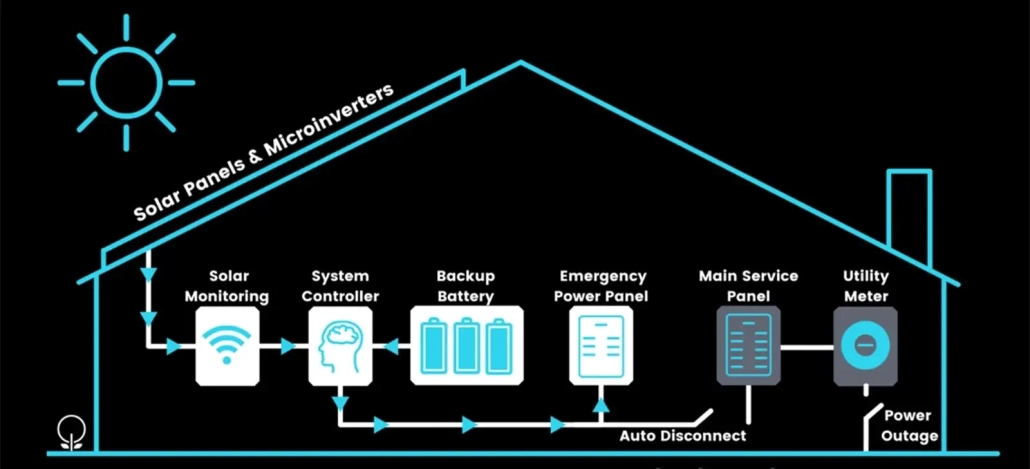
Selecting the Right Solar Battery
How Do you Test a Solar Battery Bank?
It’s smart to keep an eye on your solar batteries, and you can do this in a couple of ways:
The easiest method is to fully charge the batteries in your solar battery bank first. Then, use a multimeter to measure and write down the voltage of each battery. After that, disconnect them from any solar panels and let them sit for a few days. Check the voltage again after this period. If a battery’s voltage has dropped without being used, it likely has a problem, often a broken cell.
Another way is to test each battery by using it to power something, like a lightbulb or heater. Write down the battery’s voltage before you connect the load, then let it run for about 30 to 90 seconds and measure the voltage again. Compare these numbers for all the batteries. A faulty battery will show a bigger drop in voltage compared to the others.
How Much Do Solar Batteries Cost
In the United States, if you’re looking at the EnergySage marketplace, expect to spend about $10,000 to $20,000 for a typical home battery, including the installation. Prices can vary a lot based on different things.
You might be curious about the starting prices for some well-known solar batteries. For those we don’t have exact prices for, we’ve given an estimated total cost that includes installation.
| Battery Brand | Cost |
| Tesla Powerwall | $8,500 |
| Generac PWRcell | $9,999 |
| sonnen eco | $10,000 |
| LG Chem RESU | $9,500 – $13,000 with installation |
| Panasonic Evervolt | $15,000 – $20,000 with installation |
In Australia, Solar Choice keeps track of the average cost of home solar batteries using information from over 200 solar installers. Usually, these batteries cost about $1,000 to $1,300 per kWh of capacity when installed, and this can change based on the brand, size, and where you live.
Here are the latest prices we’ve got, not counting any rebates you might get from your state:
| Battery Size | Battery Only Price | Battery + Inverter/Charger |
| 3kWh | $4,200 | $4,700 |
| 8kWh | $10,000 | $11,100 |
| 13kWh | $16,300 | $17,600 |
| 18kWh | $23,900 | $25,900 |
| Battery Size | Only Battery Price |
| 5kWh Battery | $1280.91 |
| 10kWh Battery | $2547.32 |
| 15kWh Battery | $3833.6 |
| 20kWh Battery | $5109.7 |
| 30kWh Battery | $7693.2 |
(Please note: We only supply batteries. The price of solar batteries may vary each quarter. Before placing an order for our products, please contact us.)
Best Solar Batteries
MANLY 5kWh Battery
The 5kWh battery, backed by a 10-year warranty and a range of certifications including UN38.3, IEC62133, UL, and CE, maintains stability even in the most extreme conditions. Constructed from LiFePO4 cells, it meets the highest safety requirements. Enhance its performance with a customizable smart BMS that not only monitors but also balances the cells, ensuring maximum protection. This BMS seamlessly integrates with leading inverters such as Growatt, Goode, Deye, Luxpower, and SRNE.
MANLY 10kWh Battery
Discover our 10 kWh home battery, tailored for solar energy storage solutions. This wall-mounted unit boasts a 48V and 200Ah specification, powered by superior MANLY lithium iron phosphate cells for unmatched safety and efficiency. Designed for endurance, it offers 8000+ deep cycles, assuring lasting reliability. The powerwall features a maximum 100A discharge capacity and is safeguarded by an integrated BMS. Its modular design is sleek yet sturdy, with laser welding to enhance durability. The 10kWh battery is not only easy to install but also comes with critical safety features like overvoltage and overcurrent protection, ensuring secure operation. Plus, its robust build is engineered to withstand severe impacts, mitigating risks of explosions or fires.
MANLY 15kWh Battery
The 30kWh battery, designed as a 48v 600ah rack-mounted unit, is ideal for residential energy storage. Crafted with A-grade LiFePO4 lithium iron phosphate cells, it provides top-notch safety and reliability. Its high conversion efficiency and powerful output are complemented by an impressive 95% energy ratio, significantly minimizing the product’s size and weight for economical shipping and easy installation.
Optional LCD displays keep you informed about the battery’s working status, voltage, and cycle count. This battery is compatible with major inverter brands and features an all-in-one wall-mounted design for hassle-free setup. The plug-and-play nature simplifies installation further. Plus, for expansive energy needs, you can connect up to 8 of these 30 kWh lithium battery packs in parallel, offering adaptable solutions for a variety of solar home and off-grid energy storage systems.
1. Definition of agricultural robot:
Table of Contents
Agricultural robot is a robot that integrates various cutting-edge science and technology such as sensing technology, monitoring technology, artificial intelligence technology, communication technology, image recognition technology, precision and system integration technology. It is also an interdisciplinary and comprehensive integration of detection and sensing technology, information processing technology, automation control technology, servo drive technology, precision machinery technology and computer technology.
2.How Are Robots Used in Agriculture
Robots are widely used in agriculture to revolutionize farming practices and address the challenges faced by the industry. These robots offer numerous benefits and advancements that enhance farming efficiency and productivity. They are equipped with cutting-edge technologies, including artificial intelligence and machine learning, to perform complex tasks efficiently.
Agricultural robots provide real-time data gathering and analysis capabilities through the use of drones, enabling informed decision-making in crucial farming processes such as planting, irrigation, and pest control. This data-driven approach leads to improved crop yields, reduced costs, and optimized resource allocation. These robots also offer enhanced efficiency compared to traditional farming methods, resulting in significant time and cost savings for farmers.
The implementation of robots in agriculture faces challenges such as high initial investment costs and the lack of rural infrastructure for large-scale adoption. However, successful deployments have been observed worldwide, with Japan and Europe leading the way in utilizing robots for tasks such as harvesting, soil analysis, weeding, pruning, and planting. These robots have demonstrated increased efficiency and cost reduction in farming operations.
The development and integration of artificial intelligence into agriculture have further expanded the capabilities of agricultural robots. AI-driven decision support systems, such as yield prediction systems, enable farmers to make informed choices based on large datasets and sophisticated computer programs. This integration allows for more precise and optimized farming practices, contributing to increased agricultural productivity and sustainability.
Responsible innovation and user-centered design are crucial considerations in the development and adoption of autonomous robots in agriculture. As the field of agricultural robotics continues to evolve, ongoing research and inclusive discussions are needed to address ethical, social, and policy issues related to the responsible use of these technologies.
In conclusion, robots have transformed agriculture by offering advanced capabilities in data gathering, analysis, and decision-making processes. With their integration of artificial intelligence and machine learning, agricultural robots enable farmers to achieve higher efficiency, productivity, and sustainability in farming practices. The ongoing development and adoption of these technologies contribute to the growth and evolution of the agricultural industry.
3. Types of Agricultural Robots:
3.1 Picking Robot
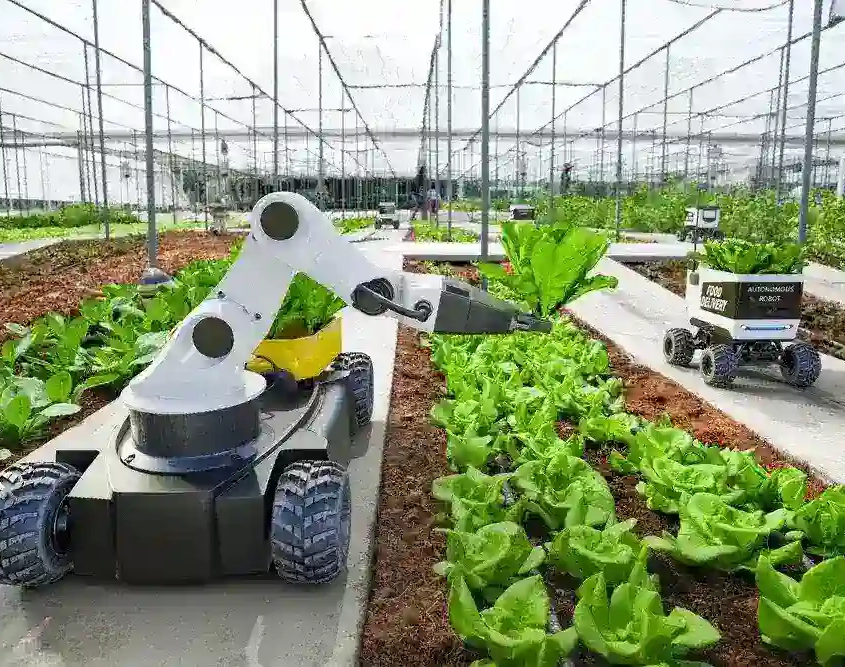
The introduction of picking robots in agricultural has the potential to revolutionize farming practices and address key challenges faced by the industry. As the world’s population continues to grow, there is an increasing demand for food production. However, labor shortages and the need for higher productivity and efficiency pose significant obstacles.
Agricultural robots, including picking robots, offer promising solutions to these challenges. These robots can automate labor-intensive tasks involved in selective harvesting, such as picking high-value crops like apples, tomatoes, and broccoli. By using sensors, cameras, and robotic arms or grippers, picking robots can detect when crops are ripe and harvest them carefully without causing damage.
The adoption of picking robots brings numerous advantages to the agricultural sector. They offer increased efficiency, accuracy, and reduced labor costs. With the ability to work continuously and tirelessly, these robots can enhance productivity and help meet the growing demand for agricultural products. Moreover, picking robots can alleviate the physical strain and repetitive nature of agricultural tasks, improving the overall working conditions for farmers.
Research and development in agricultural robotics have made significant progress, with a focus on addressing the limitations of current systems and exploring future possibilities. The use of robots in agriculture has implications beyond environmental and economic aspects, including political, social, cultural, and security considerations. Ethical challenges associated with the widespread use of agricultural robots are being examined, and key policy choices are being highlighted to maximize the benefits of robotics in agriculture.
In conclusion, the introduction of picking robots in agricultural robotics presents an exciting opportunity to transform the farming industry. These robots offer innovative solutions to labor shortages, increase productivity, and improve overall efficiency in selective harvesting tasks. As the field of agricultural robotics continues to advance, it is crucial to consider the ethical, policy, and societal implications to ensure the optimal utilization of this technology.
3.2 Grafting Robot
Grafting robots are innovative machines that automate the grafting process in agriculture, improving efficiency and enhancing seedling survival rates. These robots have gained attention worldwide, and researchers are exploring key technologies and components involved in vegetable grafting robots. Seedling feeding, clamping, and cutting devices play crucial roles in the design and operation of these robots. Machine vision technology plays a vital role in automating the grafting process, enabling accurate seedling recognition, classification, and detection.
The integration of grafting robots in agriculture presents both benefits and challenges. These robots contribute to increased productivity, improved crop quality, and reduced labor requirements . However, challenges include speed limitations, integration with seedling biotechnology, and achieving consistent quality and speed. Ongoing research focuses on enhancing intelligence, machine vision, artificial intelligence (AI), and automation to overcome these challenges and further optimize grafting robots.
The use of agricultural robots and drones, including grafting robots, is revolutionizing farming practices. These technologies leverage computational algorithms, smart devices, and advanced navigation systems to enhance efficiency and increase crop yields. Grafting robots play a crucial role in improving crop resilience and disease resistance by providing accurate and efficient grafting solutions.
The economic implications of grafting robots in field crop production are significant. Economic analysis demonstrates cost savings, increased profitability, and the viability of robotic systems in different agricultural operations. However, further research is needed to comprehensively analyze the impact, consider farm size, explore market implications, and understand the potential for crop robotics in developing countries. Grafting robots, along with other agricultural robots, hold great potential for transforming and optimizing sustainable horticultural production.
3.3 Fertilizer Robot
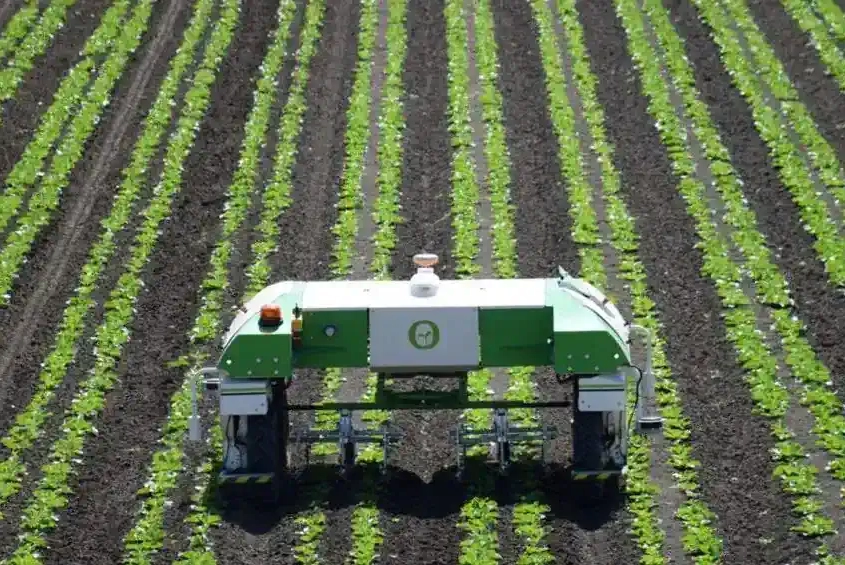
Fertilizer robots play a crucial role in modern agriculture by optimizing the fertilization process in row crops. Conventional fertilization methods often result in soil degradation and erosion due to the lack of consideration for specific plant needs. To address this challenge, precision agriculture applications utilize advanced technologies such as optical sensors and laser sensors. Multispectral cameras, for instance, analyze plant growth through NDVI indices, providing valuable insights for precise fertilization decisions. Laser sensors reconstruct vegetative environments, enabling analysis using clustering techniques and point cloud processing.
The Sureveg project exemplifies the application of cutting-edge technologies in robotic fertilization processes for row crop production. By incorporating sensors, robotic systems, and control boards, this project aims to optimize selective fertilization through the extraction of crop characteristics and relevant decision-making information. Tests conducted on cabbage and red cabbage rows have demonstrated the effectiveness of these sensors, both individually and in combination, in enhancing the fertilization of vegetables.
Fertilizer robots are part of the broader concept of smart agriculture, which encompasses various technologies and innovations revolutionizing farming practices. These technologies aim to increase efficiency, reduce labor requirements, and improve operational costs in the agricultural industry. Farm automation technologies, including fertilizer robots, have shown significant benefits such as cost savings per acre in vineyards. The adoption of these technologies is driven by factors such as rising fertilizer prices, concerns over inflation, increased labor wages, and stricter regulations on fertilizers and pesticides.
Nanotechnologies also hold promise in agriculture, including the reduction of water usage in farming. These technologies leverage the unique properties of nanoparticles to enhance fertilizer efficiency and reduce environmental impact. Cynthia Goh, a Professor of Chemistry at the University of Toronto, highlights the potential of nanotechnologies in agriculture.
In summary, fertilizer robots are integral to modern agriculture, optimizing the fertilization process in row crops and improving crop yield while reducing environmental impact. These robots, along with other smart agriculture technologies, aim to revolutionize farming practices by increasing efficiency, reducing labor requirements, and improving overall sustainability in the industry.
3.4 Agricultural Product Grading Robot
Agricultural product grading robots offer immense potential for revolutionizing the agricultural industry. These robots integrate advanced technologies to automate the sorting and grading processes, ensuring consistent quality and efficiency. The introduction of these robots addresses the challenges posed by the complex and variable nature of agricultural products. Genetic and environmental factors contribute to the high variability observed in agricultural products, necessitating precise and adaptable grading systems. By employing image processing and perception technologies, agricultural product grading robots can accurately analyze the characteristics and quality of produce. This automation enhances productivity, reduces labor requirements, and ensures consistent product quality.
Precision agriculture, which relies on the integration of robotics and advanced sensing technologies, has paved the way for the development and adoption of agricultural product grading robots. These robots play a vital role in the real-time interpretation of the agricultural environment, enabling efficient and accurate sorting and grading of products. By harnessing image processing techniques, these robots can analyze the visual characteristics of products, ensuring precise grading and sorting. The utilization of robotics in the agricultural sector has witnessed significant advancements over time, and agricultural product grading robots are at the forefront of this technological progress.
In summary, agricultural product grading robots offer a promising solution for enhancing the sorting and grading processes in the agricultural industry. These robots leverage advanced technologies, such as image processing and perception systems, to automate the analysis of product characteristics and ensure consistent quality. By integrating robotics and sensing technologies, agricultural product grading robots contribute to increased productivity, reduced labor requirements, and improved overall efficiency in the agricultural sector.
3.5 Weeding Robot
Weeding robots are a promising technology in modern agriculture, offering significant advantages in labor savings and reduced pesticide usage. Traditional weeding methods are labor-intensive and environmentally harmful, making the development of efficient and sustainable weed control solutions crucial. The integration of machine vision technologies in agricultural robots enables automated weeding robots that enhance efficiency, optimize resource utilization, and improve agricultural productivity. By leveraging computer vision, machine learning, and deep learning, weeding robots can accurately detect and remove weeds while preserving crops. These robots utilize perception, decision-making, and control technologies to navigate fields autonomously, providing effective weed management and reducing environmental pollution caused by herbicides.
Leading agricultural technology companies have made significant strides in developing weeding robots that offer innovative solutions. For instance, CarbonRobotics has introduced an autonomous robot capable of distinguishing weeds from crops using laser technology. This robot employs artificial intelligence, high-resolution cameras, and powerful GPUs for image recognition, enabling precise weed elimination while preserving nearby crops. It operates with GPS and LIDAR systems, ensuring accurate navigation and obstacle avoidance. Similarly, Naïo Technologies has developed multiple weeding robots, such as Oz, Ted, and Dino, each designed for specific agricultural applications, employing camera vision, sensors, and precise tool positioning.
Weeding robots present a significant opportunity for farmers to alleviate physical strain and protect crops efficiently. These robotic solutions offer a sustainable alternative to labor-intensive weeding practices, reducing reliance on agrochemicals and promoting environmental preservation. By harnessing advanced technologies and automation, weeding robots enhance agricultural practices, streamline operations, and contribute to the overall sustainability of the farming industry.
3.6 Seedling Robot
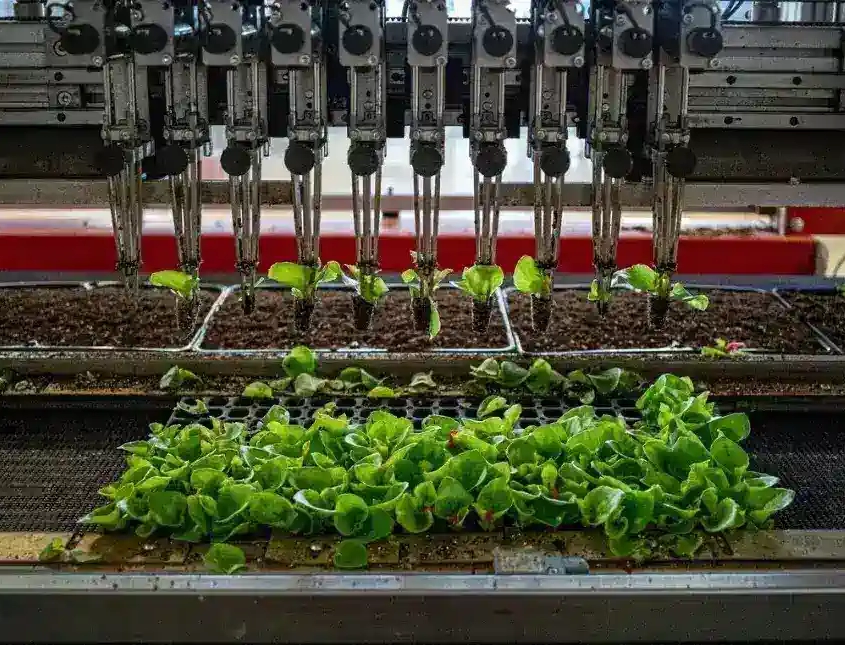
Agricultural robots are revolutionizing farming practices worldwide, including crop seeding. These robots offer a range of benefits, such as increased efficiency, reduced labor costs, and improved crop yields. The development of low-cost agricultural robots specifically designed for crop seeding has shown promising results. These robots utilize a mobile base and a seeding mechanism to sow seedlings into the ground continuously. In tests, the robot achieved a sowing rate of 138 seedlings in 5 minutes with 92% accuracy, outperforming human workers. The implementation of such robots in agriculture can significantly reduce labor costs and improve operational efficiency. By leveraging automation and eliminating the need for human intervention, crop production yields can be increased, and the industry can address labor shortages.
The global market for agricultural robots, including seeding robots, is projected to reach USD 74.5 billion by 2024, indicating the increasing adoption and potential of these technologies. The integration of Artificial Intelligence (AI) in precision agriculture has enabled farmers to optimize inputs like fertilizer, pesticides, herbicides, and water, leading to increased yields. Additionally, aerial imaging drones equipped with sensors like RGB cameras provide valuable insights into crop health and soil conditions, empowering data-driven decision-making in agriculture. The use of various types of drones, including fixed-wing, rotary-wing, and hybrid drones, offers flexibility in agricultural applications.
The development of smart agriculture robots, including those for crop seeding, addresses the challenges faced by farmers in terms of labor scarcity and changing environmental conditions. By employing sensors and automation, these robots save time, enhance energy efficiency, and optimize crop productivity. The utilization of advanced technologies, such as Arduino boards and wireless communication, allows precise control and monitoring of the robotic vehicles. The development of such innovative robotic systems contributes to the advancement of agricultural robotics and opens up possibilities for broader applications in the industry.
The progress in agricultural robotics, including crop seeding robots, is driven by the need for increased efficiency, reduced labor costs, and optimized crop yields. These robots leverage computational algorithms, environmental perception, and precision technologies to enhance production processes. Precision agriculture, enabled by small smart devices like sensors, drones, and trackers, allows for optimized detection, spraying, weeding, and harvesting of crops. The advancements in agricultural robotics, including crop seeding robots, contribute to the commercialization and ongoing development of these technologies in the agricultural sector.
3.7 Farming Robot
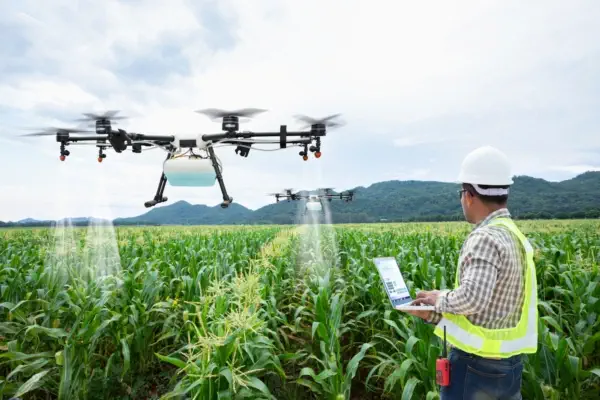
he adoption of farming robots in agriculture brings about significant transformations compared to traditional working methods. These robots offer several advantages and challenges that impact various dimensions of farm operations. The integration of perception, decision-making, control, and execution techniques has led to notable improvements, but limited integration with artificial intelligence remains a restriction for widespread use. However, farming robots are emerging as crucial contributors to digital agriculture, offering benefits such as flexibility, precision, increased productivity, and continuous operation without breaks . These robots can perform tasks like planting, irrigation, fertilization, monitoring, and harvesting, reducing the need for human labor. They operate at higher speeds, with fewer errors, and navigate obstacles effectively, leading to improved product quality and lower production costs.
The introduction of farming robots in agriculture also brings about transformations in farm structure, work organization, the meaning of work, and technical-economic performance. While the impact on work is complex, studies indicate that farm size is not necessarily correlated with robotization. Skill and wage segmentation may occur in the labor market, and work reorganization involves a decrease in physical workload but an increase in mental workload for monitoring alarms. Changes in the animal-human relationship can also lead to new farmer and worker identities. However, it’s important to note that the adoption of automated milking systems did not support a reduction in working time.
Smart farming and digital agriculture, enabled by agricultural robots, address challenges such as labor shortages, declining agricultural populations, and cultivation uncertainty due to climate change. These robots, including aerial and ground robots, facilitate data collection and crop management through remote sensing. They are increasingly utilized for tasks such as monitoring, spraying, and harvesting, reducing labor shortages and long-term costs. However, agricultural environments pose challenges due to crop diversity and varying robot platforms. Despite challenges such as high initial costs, maintenance requirements, and potential job displacement, robotics in agriculture offer effective solutions for improving productivity and transforming the industry.
The advancements in agricultural robotics have resulted in the emergence of various types of farming robots capable of performing tasks like picking apples, harvesting lettuce, gathering strawberries, and removing weeds. These robots are driven by the need to address labor shortages and meet the growing global population’s demands for food. While automation seems suitable for crop harvesting, the delicate nature of fruits and vegetables presents challenges for precise robot operations. Nonetheless, advancements made by agtech companies and academic institutions have shown promise in developing robots capable of picking ripe fruit and handling lettuce harvesting. These innovations have the potential to transform the industry and contribute to meeting critical agricultural needs.
4. Lithium Batteries for agricultural robots
Lithium-ion batteries play a crucial role in powering agricultural robots, offering numerous advantages over other battery technologies. These batteries provide high energy density, reliability, and faster charging capabilities, making them ideal for the demanding requirements of agricultural applications. Manly Battery offers specialized lithium-ion battery solutions tailored for small and medium-sized agricultural robots, including driverless transport vehicles and forklifts. These modular and expandable batteries, such as the “Easy Block” and “Easy Blade,” come in various versions with different power outputs, voltages, and energy capacities. For example, the “Easy Block” pack offers voltages ranging from 12.8 to 38.4 volts, while the “Easy Blade” pack provides voltage options between 24 and 48 volts.
Lithium-ion batteries have proven to be reliable and eco-friendly solutions for the energy requirements of agricultural robots. They offer longer lifespans, higher energy densities, and improved power and load capacities compared to lead-acid batteries, all in a smaller form factor. With their advanced technology, lithium-ion batteries contribute to operational efficiency in agricultural applications by reducing head length in truck and pallet loading, enabling narrower aisles, and maximizing storage space. Manly Battery, as a sustainable partner in the agricultural robotics sector, provides both standard and customizable lithium-ion battery options to meet the diverse needs of users and support the industry’s growth.
In the agricultural robotics market, battery power is crucial, considering factors such as accessibility, reliability, longevity, convenience, and cost. While lead-acid batteries were commonly used in the past, many designers are transitioning to lithium-iron phosphate (LFP), lithium nickel cobalt aluminum (NCA), or lithium nickel manganese cobalt (NMC) technologies for improved energy density and cycle life. Manly Battery’s experience in battery technology, such as the transition from lead-acid to NMC technology, demonstrates the significant benefits and market acceptance of lithium-ion batteries in terms of higher energy density, efficiency enhancements, and extended warranties. The use of cylindrical 18650 or 21700 cells allows for greater granularity in the design of the battery system.
Lithium-ion batteries also find extensive use in the automated guided vehicles and autonomous mobile robots (AGV/AMR) market, providing advantages such as longer run times, lighter loads, and faster, more efficient charging compared to lead-acid batteries. These batteries prove to be the optimal choice for mobile robots in various industries, including agriculture, as they offer superior performance, increased productivity, and enhanced workplace safety. While the exact voltages of lithium-ion batteries for agricultural robots may vary depending on specific applications and configurations, they typically range from 12.8 to 48 volts .
In summary, lithium-ion batteries provide the necessary power, reliability, and energy density required for agricultural robots. With their advanced technology and customizable options, these batteries contribute to the sustainable and efficient operation of autonomous mobile robots in agriculture.
5. Conclusion
The functions of agricultural robots are very complete and can replace part of human labor. Robots can do some things that humans cannot do, and their work efficiency is very high. They can engage in heavy manual labor, monotonous and repetitive tasks, such as spraying pesticides, harvesting and sorting crops, etc., which can liberate a lot of human resources. Robots are replacing or have replaced the heavy manual labor of humans, and can work continuously without interruption, which greatly improves labor productivity and is an indispensable and important link in the intelligentization of agriculture.

